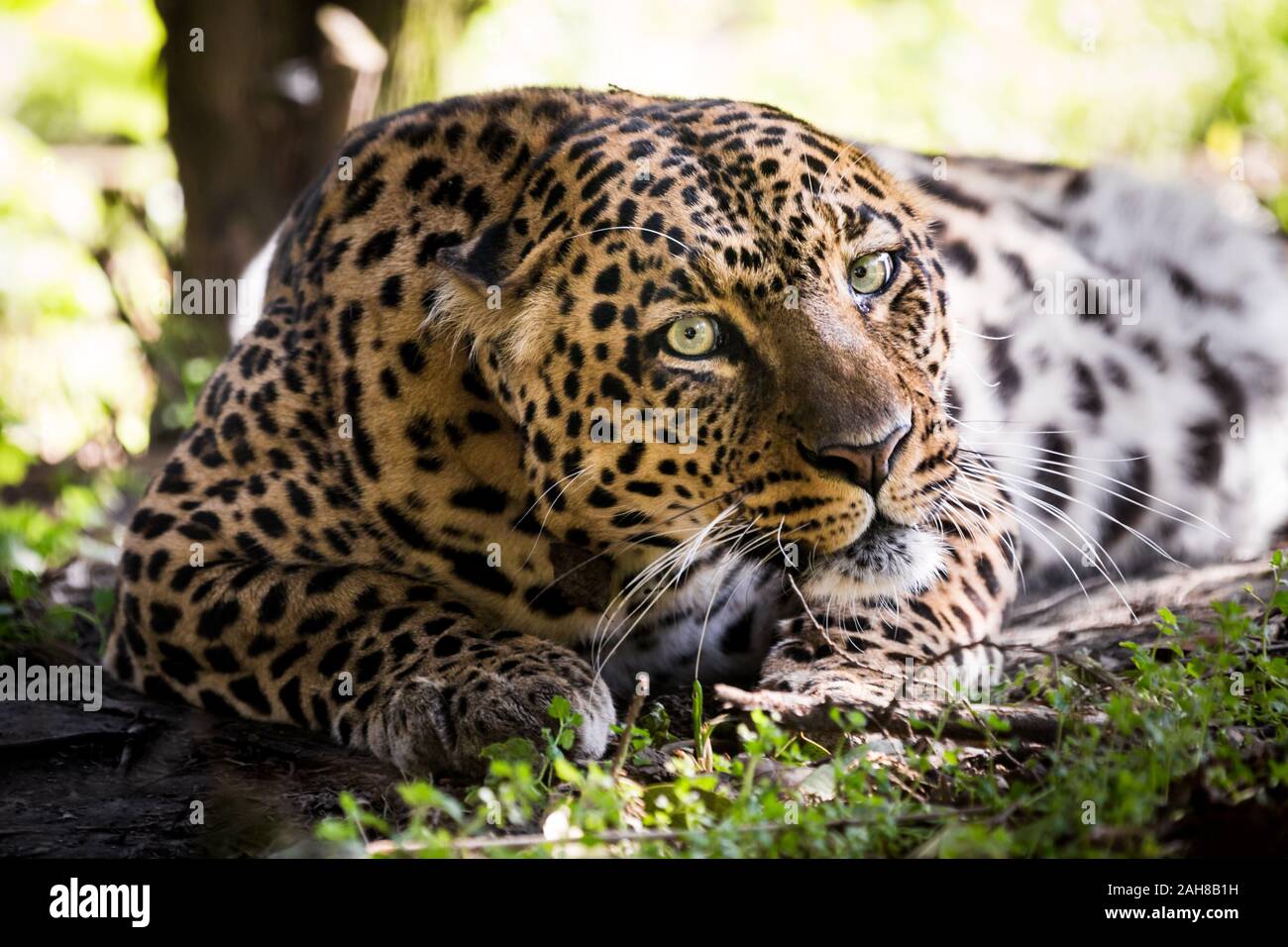Close up portrait of a wild leopard sitting in the underbush and staring at the camera

Image details
Contributor:
Roberto Dantoni / Alamy Stock PhotoImage ID:
2AH8B1HFile size:
48.8 MB (1.9 MB Compressed download)Releases:
Model - no | Property - noDo I need a release?Dimensions:
5059 x 3373 px | 42.8 x 28.6 cm | 16.9 x 11.2 inches | 300dpiDate taken:
10 April 2016Location:
ItalyMore information:
500px Photo ID: 148635899 - www.robertodantoni.it The leopard (Panthera pardus) is one of the five "big cats" in the genus Panthera. It is a member of the family Felidae with a wide range in regions of sub-Saharan Africa, West Asia, the Middle East, South and Southeast Asia to Siberia. Fossil records found in Italy suggest that in the Pleistocene it ranged as far as Europe. Compared to other members of Felidae, the leopard has relatively short legs and a long body with a large skull. It is similar in appearance to the jaguar, but is smaller and more lightly built. Its fur is marked with rosettes similar to those of the jaguar, but the leopard's rosettes are smaller and more densely packed, and do not usually have central spots as the jaguar's do. Both leopards and jaguars that are melanistic are known as black panthers. The leopard's success in the wild is due to its well camouflaged fur; its opportunistic hunting behaviour, broad diet, and strength to move heavy carcasses into trees; its ability to adapt to various habitats ranging from rainforest to steppe and including arid and montane areas; and to run at speeds up to 58 kilometres per hour (36 mph). It is listed as near threatened on the IUCN Red List because leopard populations are declining in large parts of their range. They are threatened by habitat loss and pest control. Their habitats are fragmented and they are illegally hunted so that their pelts may be sold in wildlife trade for medicinal practices and decoration. They have been extirpated in Hong Kong, Singapore, Kuwait, Syria, Libya, Tunisia and most likely Morocco.